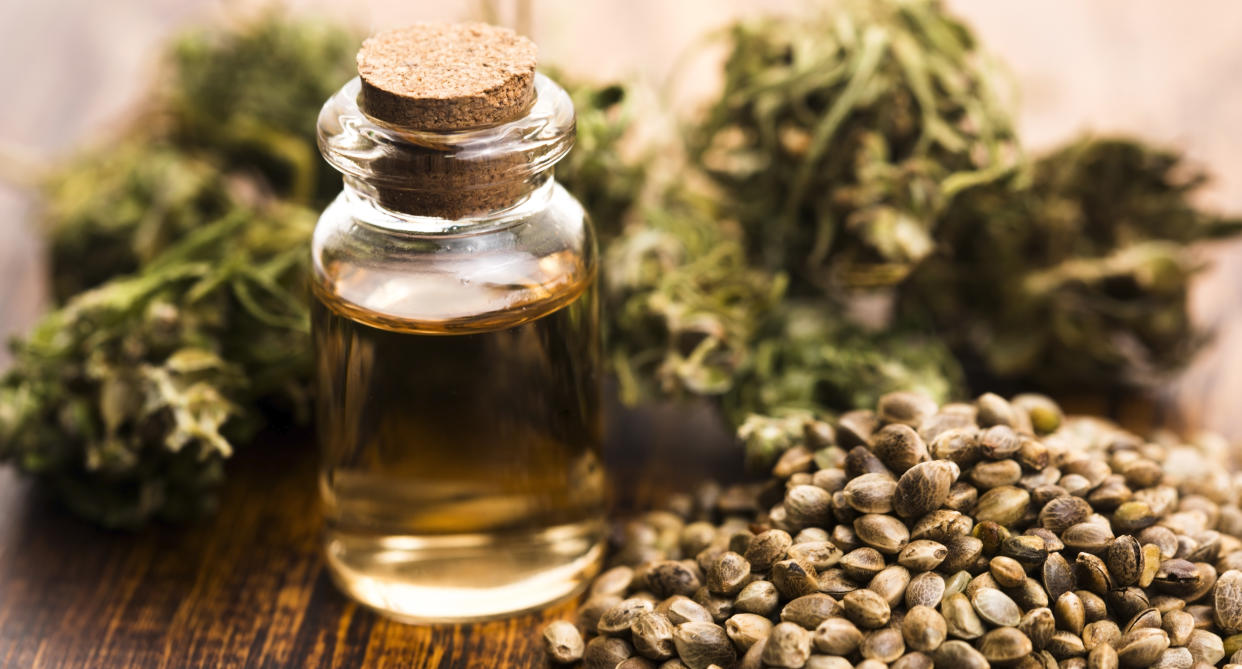The difference between FDA-approved CBD and ‘regular’ marijuana

On Monday, the Food and Drug Administration approved the first drug created from marijuana for treating two forms of epilepsy.
The drug — called Epidiolex — employs cannabidiol (CBD), a chemical component in marijuana, to treat two rare and severe forms of epilepsy: Lennox-Gastaut syndrome and Dravet syndrome, the FDA said in a press release. The drug is designed for people age 2 and older.
“This approval serves as a reminder that advancing sound development programs that properly evaluate active ingredients contained in marijuana can lead to important medical therapies. And, the FDA is committed to this kind of careful scientific research and drug development,” FDA Commissioner Scott Gottlieb, M.D., said in a statement.
The drug was studied in three randomized, double-blind, placebo-controlled clinical trials that involved 516 patients with either Lennox-Gastaut syndrome or Dravet syndrome, the FDA says. When taken with other medications, Epidiolex was shown to be effective in reducing the frequency of seizures in patients compared to those who took a placebo.
Given that CBD is an ingredient in marijuana, people often confuse it with taking “regular” marijuana. However, Epidiolex does not contain THC, the component of marijuana that gets people high, Jamie Alan, an assistant professor of pharmacology and toxicology at Michigan State University, tells Yahoo Lifestyle. “It doesn’t have any euphoric or hallucinogenic properties,” she says. “You’re not going to get high on it.”
Epidiolex is actually made by extracting the CBD molecule from cannabis plants and isolating it, Stephen Schultz, a spokesperson for GW Pharmaceuticals, which makes the drug, tells Yahoo Lifestyle. The medicine is then formulated in a way that makes a consistent product.
Experts are still figuring out how CBD works in the body, Alan says, but it can stimulate serotonin receptors in the body, inhibit pain receptors and activate nuclear receptors, which are responsible for sensing steroid and thyroid hormones, and other molecules in the body.
There are other drugs inspired by compounds in marijuana on the market — like Marinol, a synthetic cannabinoid that’s used to treat nausea and vomiting from chemotherapy — but Epidiolex is the first that’s been approved by the FDA and created from an actual marijuana plant and not made synthetically.
The most common side effects of Epidiolex in clinical trials were sleepiness, sedation, lethargy, elevated liver enzymes, decreased appetite, diarrhea, rash, fatigue, malaise and weakness, insomnia, sleep disorder, poor quality sleep, and infections, the FDA says.
CBD is considered a Schedule I substance under the Controlled Substances Act because it’s a chemical component of marijuana, placing it alongside drugs like heroin and MDMA.
It’s unclear at this time whether Epidiolex receiving FDA approval will move marijuana to a different class of drugs in the future, or how this will affect CBD research in the future. However, Schultz says his company plans to create more CBD medications. Alan also expects that there will be more CBD products and other medications derived from cannabinoids on the market. “The research in this field is very, very hot,” she says. “We’re just now really understanding cannabinoids and the breadth of what they can do.”
Read more from Yahoo Lifestyle:
Follow us on Instagram, Facebook, and Twitter for nonstop inspiration delivered fresh to your feed, every day.

